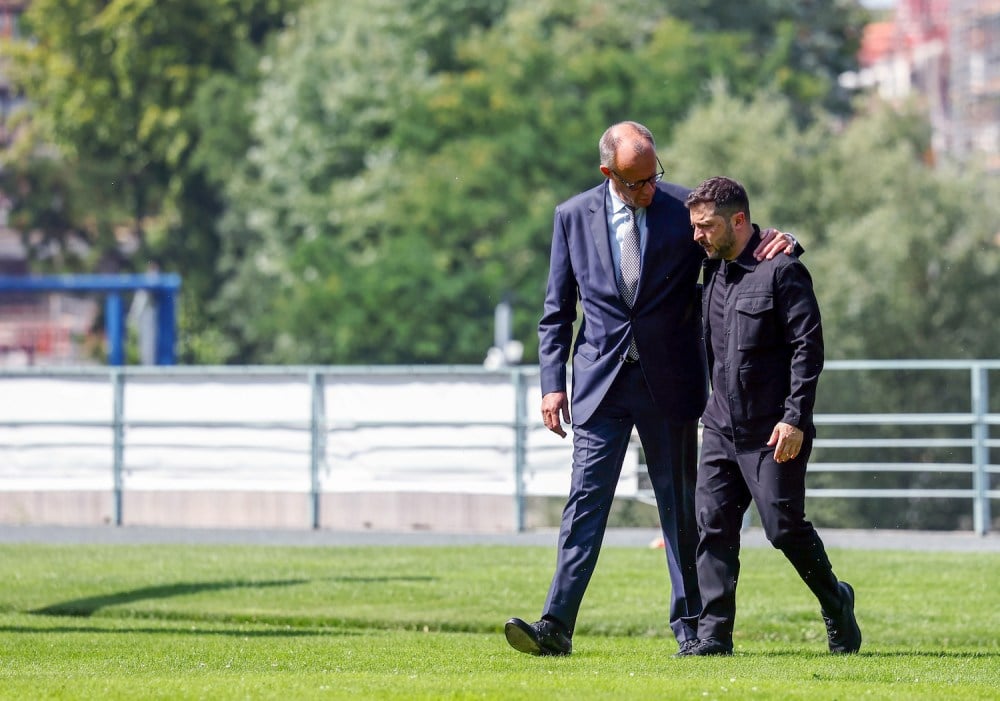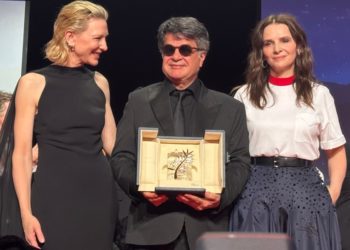Ukrainian President Volodymyr Zelensky is coming back to the White House, and this time, he has a phalanx of European leaders backing him up.
Finnish President Alexander Stubb, European Commission President Ursula von der Leyen, NATO Secretary-General Mark Rutte, Italian Prime Minister Giorgia Meloni, British Prime Minister Keir Starmer, French President Emmanuel Macron, and German Chancellor Friedrich Merz all announced that they would accompany Zelensky when he meets with U.S. President Donald Trump in Washington on Monday.
The first three names on that list will be particularly important when it comes to making a case for Ukraine’s best interests to Trump, whose emphasis on interpersonal relationships drives much of his decision-making.
Finnish President Alexander Stubb
Stubb has forged a close relationship with Trump in recent months (in part over Trump’s admiration for Stubb’s excellent golf game), which has given him an opening to caution Trump against trusting Russian President Vladimir Putin. “I can communicate what Europeans or Zelensky think to Trump, and then I can communicate what Trump thinks to my European colleagues,” Stubb told the Wall Street Journal in a recent interview.
As the leader of Finland, a country that shares an 830-mile border with Russia and is NATO’s second-newest member, Stubb has a familiarity and knowledge base that goes well beyond putts and birdies to convince Trump that he knows what he’s talking about when it comes to Russia and European security.
European Commission President Ursula von der Leyen
Von der Leyen doesn’t enjoy quite the same close bond with Trump, but she is coming off a big recent trans-Atlantic win: the European Union’s trade deal with the United States, which gave Trump not only a 15 percent tariff on most European goods sent to U.S. shores but also a commitment for the EU to invest hundreds of billions of dollars in the U.S. economy (including $750 billion in its energy sector) over the next few years. Trump also seems to respect her—ahead of trade negotiations this year, for instance, the U.S. leader praised her, telling reporters that she’s “so fantastic.” Given the Trump administration’s tendency to deal with Europe as a monolith on issues such as military spending and support for Ukraine, von der Leyen’s role representing 27 European nations is also likely to prove useful in presenting a united front to Trump.
NATO Secretary-General Mark Rutte
Rutte, meanwhile, has proved skilled at one of the most surefire ways into Trump’s good graces, showering the U.S. president with flattery (including a reference to him as “daddy”) and rolling out the metaphorical red carpet for him during this year’s NATO summit in The Hague in June. It seems to have worked—though Rutte’s corralling of European commitments to increase defense spending certainly helped—and Trump came away from the summit saying he felt “differently” about his previous skepticism of the alliance. “I left here saying that these people really love their countries, it’s not a rip-off, and we’re here to help them protect their country,” he said.
Italian Prime Minister Giorgia Meloni
Meloni is in some ways the most Trumpian of all the European leaders flying into Washington. She leads a similar right-wing government in Italy and has been repeatedly tagged in the media with the now-coveted title of “Trump whisperer.” It bears mentioning that others have also been called that, including Macron and Rutte, but Meloni’s relationship with Trump has had fewer hiccups than most.
British Prime Minister Keir Starmer, French President Emmanuel Macron, and German Chancellor Friedrich Merz
The leaders of three of Europe’s biggest and most influential economies will also be in attendance to stress that Zelensky and Ukraine have their unwavering support. Starmer was the first of a half-dozen leaders to have successfully negotiated a trade deal with Trump. Macron’s camaraderie with Trump dates back to both men’s first terms in office nearly a decade ago but has seen some tense moments in recent months. Merz only came to power this year and has not had the time to build a bromance with Trump, though he has quickly emerged as one of Zelensky’s closest confidants in Europe. His changes to Germany’s fiscal debt limits to allow greater defense spending certainly won’t hurt, either.
Together, Europe’s A-team will be aiming to water down the impact of Trump’s Friday meeting in Alaska with Putin, where the U.S. president rolled out a literal red carpet, held three hours of ultimately inconclusive talks without committing to further sanctions on Russia, and is now pushing for a broader peace agreement rather than the immediate cease-fire Ukraine and others—including Trump himself—previously called for.
The post Who Zelensky Is Bringing to Washington—and Why appeared first on Foreign Policy.




